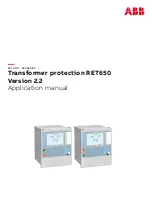
cegard/Lift LX/LY
English
© CEDES | V 2.10
23
11.2.1 Control unit plug-in error diagnosis
Alarm R
Alarm T
Remark
Error possibility
Alternately flashing
Self-test during power-up for 10 s (no error!). The control unit
light curtain is defective if permanent flashing occurs.
Flashing
Receiver disconnected, not connected or defective.
Flashing
Emitter edges disconnected, not connected, defective or an
individual sensor is covered.
Constantly illuminated
The control unit plug-in attempts to calibrate until all light beams
are received. One or more light beams are interrupted by an
object in the monitored area, opto edges are badly aligned or
the distance between emitter and receiver edges is too large or
too small. In the case of flush mounting, the drilled holes could
also be too small!
12. Regulations
Safe operation can only be ensured if the
points described below and the connection
and limitation values in these operating
instructions are observed by the installation
company, service firm and the user.
Operation of the system is unallowable if
these requirements are not met.
12.1 Legislation and regulations
The installation company, service firm and the user must
observe both national and local legislation, along with
the regulations laid down by the elevator manufacturer,
to enable cegard/Lift to fulfil its safety function and to
maintain it.
12.2 Qualifications of skilled personnel
Installation, commissioning and maintenance of the
cegard/Lift should only be carried out by qualified
personnel who can prove that they have received special
training in elevator system safety technology. The system
control rack should be installed in a manner, which gives
unauthorized personnel no opportunity to change the
wiring. This is achieved by mounting it on the roof of the
elevator cabin.
12.3 Periodic testing
The cegard/Lift should be checked for correct function
at each legally-prescribed elevator service. This should
involve checking whether the light curtain can be triggered
throughout the entire monitoring range e.g. with the aid of
the buzzer.
12.4 Reflection
Even very accurate calibration (as takes place in the control
unit plug-in) cannot prevent every case of reflection.
Extremely reflective shaft walls (tiled or with metal plating)
running parallel to monitoring surfaces or even distances
between emitter and receiver edges which are too short,
can cause reflections.
Reflection should be reduced with appropriate measures
if the light curtain is not triggered by interrupting the
protective zone. This can involve the use of the CEDES flush
mounting kit, a matt black paint coating, sand blasting or
the fitting of a shade.
12.5 Cleaning the opto edges
The cegard/Lift is an optical device. The opto edges should
therefore only be cleaned with a soft cloth and, in the case
of stubborn dirt, soapy water. Solvents should never be
used. Opto edges could be destroyed or their range could
be reduced by such treatment.
13. Decommissioning, repair and
disposal
13.1 Decommissioning
The cegard/Lift LX and LY can only be decommissioned
if an equivalent or better accident prevention measure
(e.g. interior cabin door) is installed. This should involved
complete de-commissioning of installation kits, optical
edges and the control unit plug-in.
13.2 Repair
Any repair work should be executed exclusively by CEDES
specialised service or repair specialists with written
authorization from CEDES.
SAFETY ADVICE
Any other repairs can adversely effect safety
and constitute a risk for elevator users.
13.3 Disposal
Please recycle the packaging carton. Large quantities of
packaging material can also be disposed of at every CEDES
subsidiary or CEDES representative.
CEDES subsidiaries or CEDES representatives also take
back used units for dismantling and reintroduce the
components into the material cycle again.














































